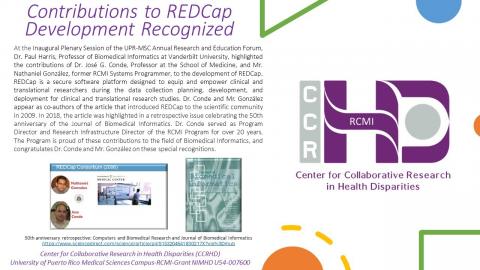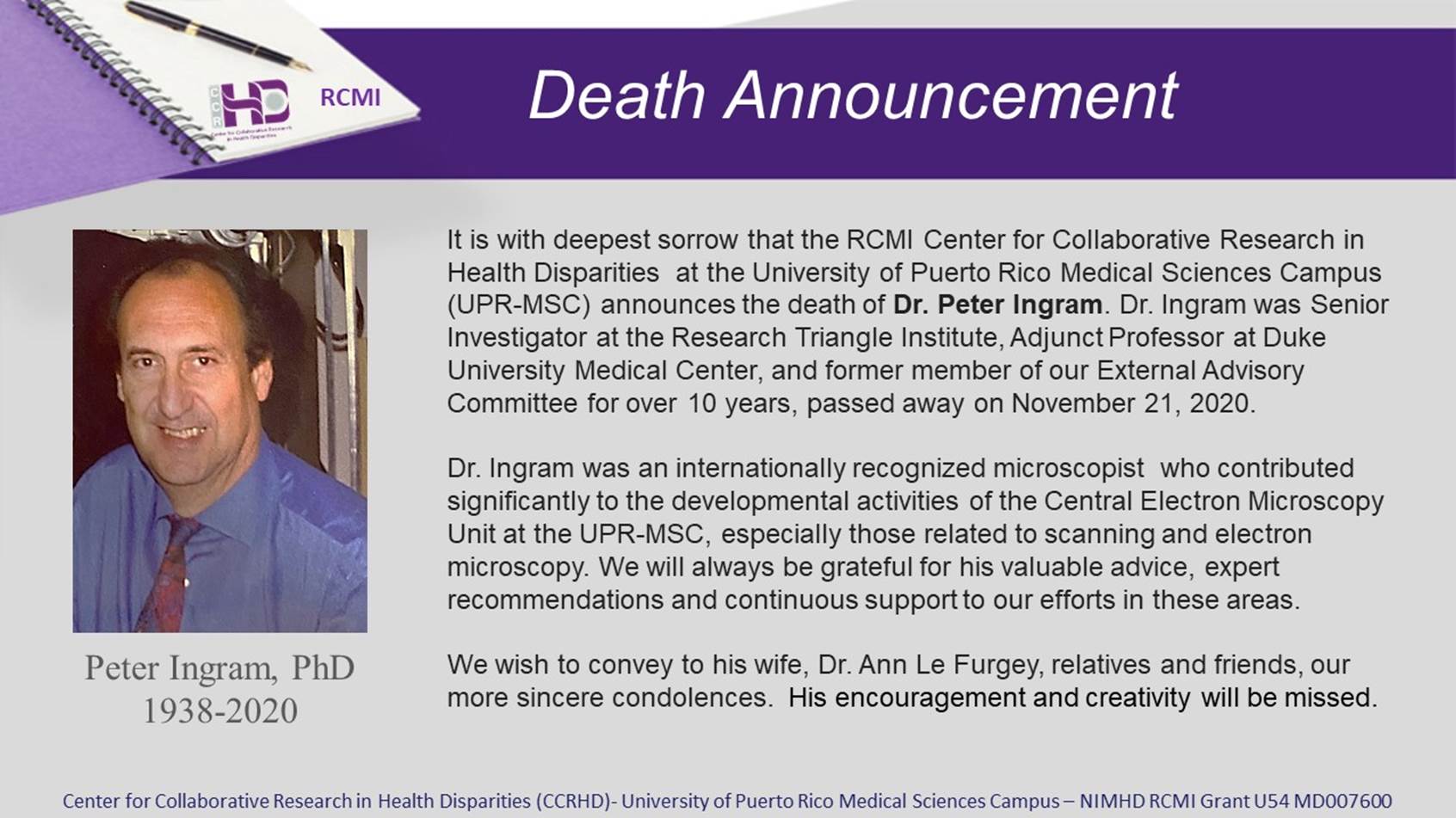COVID-19: Health Equity Considerations and Racial and Ethnic Minority Groups

COVID-19: Health Equity Considerations and Racial and Ethnic Minority Groups

On This Page
Long-standing systemic health and social inequities have put many people from racial and ethnic minority groups at increased risk of getting sick and dying from COVID-19. The term “racial and ethnic minority groups” includes people of color with a wide variety of backgrounds and experiences. But some experiences are common to many people within these groups, and social determinants of health have historically prevented them from having fair opportunities for economic, physical, and emotional health. [1]
There is increasing evidence that some racial and ethnic minority groups are being disproportionately affected by COVID-19. [2], [3], [4], [5], [6] Inequities in the social determinants of health, such as poverty and healthcare access, affecting these groups are interrelated and influence a wide range of health and quality-of-life outcomes and risks.[1] To achieve health equity, barriers must be removed so that everyone has a fair opportunity to be as healthy as possible.
Factors that contribute to increased risk
Some of the many inequities in social determinants of health that put racial and ethnic minority groups at increased risk of getting sick and dying from COVID-19 include:
· Discrimination: Unfortunately, discrimination exists in systems meant to protect well-being or health. Examples of such systems include health care, housing, education, criminal justice, and finance. Discrimination, which includes racism, can lead to chronic and toxic stress and shapes social and economic factors that put some people from racial and ethnic minority groups at increased risk for COVID-19.[5], [7], [8], [9]
· Healthcare access and utilization: People from some racial and ethnic minority groups are more likely to be uninsured than non-Hispanic whites. [10] Healthcare access can also be limited for these groups by many other factors, such as lack of transportation, child care, or ability to take time off of work; communication and language barriers; cultural differences between patients and providers; and historical and current discrimination in healthcare systems. [11] Some people from racial and ethnic minority groups may hesitate to seek care because they distrust the government and healthcare systems responsible for inequities in treatment [12] and historical events such as the Tuskegee Study of Untreated Syphilis in the African American Male and sterilization without people’s permission. [13], [14], [15], [16]
· Occupation: People from some racial and ethnic minority groups are disproportionately represented in essential work settings such as healthcare facilities, farms, factories, grocery stores, and public transportation. [17] Some people who work in these settings have more chances to be exposed to the virus that causes COVID-19 due to several factors, such as close contact with the public or other workers, not being able to work from home, and not having paid sick days. [18]
· Educational, income, and wealth gaps: Inequities in access to high-quality education for some racial and ethnic minority groups can lead to lower high school completion rates and barriers to college entrance. This may limit future job options and lead to lower paying or less stable jobs. [19] People with limited job options likely have less flexibility to leave jobs that may put them at a higher risk of exposure to the virus that causes COVID-19. People in these situations often cannot afford to miss work, even if they’re sick, because they do not have enough money saved up for essential items like food and other important living needs.
· Housing: Some people from racial and ethnic minority groups live in crowded conditions that make it more challenging to follow prevention strategies. In some cultures, it is common for family members of many generations to live in one household. In addition, growing and disproportionate unemployment rates for some racial and ethnic minority groups during the COVID-19 pandemic[19] may lead to greater risk of eviction and homelessness or sharing of housing.
These factors and others are associated with more COVID-19 cases, hospitalizations, and deaths in areas where racial and ethnic minority groups live, learn, work, play, and worship.[5],[10], [20], [21] They have also contributed to higher rates of some medical conditions that increase one’s risk of severe illness from COVID-19. In addition, community strategies to slow the spread of COVID-19 may cause unintentional harm, such as lost wages, reduced access to services, and increased stress, for some racial and ethnic minority groups. [22]
What We Can Do
The COVID-19 pandemic may change some of the ways we connect and support each other. As individuals and communities respond to COVID-19 recommendations and circumstances (e.g., school closures, workplace closures, social distancing), there are often unintended negative impacts on emotional well-being such as loss of social connectedness and support. Shared faith, family, and cultural bonds are common sources of social support. Finding ways to maintain support and connection, even when physically apart, can empower and encourage individuals and communities to protect themselves, care for those who become sick, keep kids healthy, and better cope with stress.
Community- and faith-based organizations, employers, healthcare systems and providers, public health agencies, policy makers, and others all have a part in helping to promote fair access to health. To prevent the spread of COVID-19, we must work together to ensure that people have resources to maintain and manage their physical and mental health, including easy access to information, affordable testing, and medical and mental health care. We need programs and practices that fit the communities where racial and minority groups live, learn, work, play, and worship.
Data on COVID-19 and Race and Ethnicity
CDC resources
· COVID-NET: A Weekly Summary of U.S. COVID-19 Hospitalization Data
· COVIDView: A Weekly Surveillance Summary of U.S. COVID-19 Activity
Other resources
· The COVID Tracking Project’s The COVID Racial Data Trackerexternal icon
· Emory University’s COVID-19 Health Equity Interactive Dashboardexternal icon
References
[1] U.S. Department of Health and Human Services. Social Determinants of Health [online]. 2020 [cited 2020 Jun 20]. available from https://www.healthypeople.gov/2020/topics-objectives/topic/social-determinants-of-healthexternal icon
[2] Stokes EK, Zambrano LD, Anderson KN, et al. Coronavirus Disease 2019 Case Surveillance — United States, January 22–May 30, 2020. MMWR Morb Mortal Wkly Rep 2020;69:759–765. DOI: http://dx.doi.org/10.15585/mmwr.mm6924e2external icon.
[3] Killerby ME, Link-Gelles R, Haight SC, et al. Characteristics Associated with Hospitalization Among Patients with COVID-19 — Metropolitan Atlanta, Georgia, March–April 2020. MMWR Morb Mortal Wkly Rep. ePub: 17 June 2020. DOI: http://dx.doi.org/10.15585/mmwr.mm6925e1external icon.
[4] Gold JA, Wong KK, Szablewski CM, et al. Characteristics and Clinical Outcomes of Adult Patients Hospitalized with COVID-19 — Georgia, March 2020. MMWR Morb Mortal Wkly Rep 2020;69:545–550. DOI: http://dx.doi.org/10.15585/mmwr.mm6918e1external icon.
[5] Price-Haygood EG, Burton J, Fort D, Seoane L. Hospitalization and Mortality among Black Patients and White Patients with Covid-19. N Engl J Med 2020. DOI: https://doi.org/10.1056/nejmsa2011686external icon.
[6] Millet GA, Jones AT, Benkeser D, et al. Assessing Differential Impacts of COVID-19 on Black Communities. Ann Epidemiol. 2020;47:37-44. DOI: https://doi.org/10.1016/j.annepidem.2020.05.003external icon.
[7] Paradies Y. A systematic review of empirical research on self-reported racism and health. Int J Epidemiol. 2006; 35(4):888–901. DOI: https://doi.org/10.1093/ije/dyl056external icon.
[8] Simons RL, Lei MK, Beach SRH, et al. Discrimination, segregation, and chronic inflammation: Testing the weathering explanation for the poor health of Black Americans. Dev Psychol. 2018;54(10):1993-2006. DOI: https://doi.org/10.1037/dev0000511external icon.
[9] Cordes J, Castro MC. Spatial Analysis of COVID-19 Clusters and Contextual Factors in New York City. Spat Spatiotemporal Epidemiol. 2020;34:100355. DOI: https://dx.doi.org/10.1016%2Fj.sste.2020.100355external icon.
[10] Berchick, Edward R., Jessica C. Barnett, and Rachel D. Upton Current Population Reports, P60-267(RV), Health Insurance Coverage in the United States: 2018, U.S. Government Printing Office, Washington, DC, 2019.
[11] Institute of Medicine (US) Committee on the Consequences of Uninsurance. Care Without Coverage: Too Little, Too Late. Washington (DC): National Academies Press (US); 2002. DOI: https://doi.org/10.17226/10367external icon.
[12] Institute of Medicine. 2003. Unequal Treatment: Confronting Racial and Ethnic Disparities in Health Care. Washington, DC: The National Academies Press. DOI: https://doi.org/10.17226/10260external icon.
[13] U.S. National Library of Medicine. Native Voices: Timeline: Government admits forced sterilization of Indian Women [online]. 2011 [cited 2020 Jun 24]. Available from URL: https://www.nlm.nih.gov/nativevoices/timeline/543.htmlexternal icon
[14] Novak NL, Lira N, O’Connor KE, Harlow SD, Kardia SLR, Stern AM. Disproportionate Sterilization of Latinos Under California’s Eugenic Sterilization Program, 1920-1945. Am J Public Health. 2018;108(5):611-613. DOI: https://dx.doi.org/10.2105%2FAJPH.2018.304369external icon.
[15] Stern AM. Sterilized in the name of public health: race, immigration, and reproductive control in modern California. Am J Public Health. 2005 Jul;95(7):1128-38. DOI: https://dx.doi.org/10.2105%2FAJPH.2004.041608external icon.
[16] Prather C, Fuller TR, Jeffries WL 4th, et al. Racism, African American Women, and Their Sexual and Reproductive Health: A Review of Historical and Contemporary Evidence and Implications for Health Equity. Health Equity. 2018;2(1):249-259. DOI: https://dx.doi.org/10.1089%2Fheq.2017.0045external icon.
[17] U.S. Bureau of Labor Statistics. Labor force characteristics by race and ethnicity, 2018 [online]. 2019 [cited 2020 Jun 24]. Available from URL: https://www.bls.gov/opub/reports/race-and-ethnicity/2018/home.htmexternal icon
[18] Economic Policy Institute. Black workers face two of the most lethal preexisting conditions for coronavirus—racism and economic inequality [online]. 2020 [cited 2020 Jun 28]. Available from URL: https://www.epi.org/publication/black-workers-covid/external icon
[19] The Annie E. Casey Foundation. Unequal Opportunities in Education [online]. 2006 [cited 2020 Jun 24]. Available from: https://www.aecf.org/m/resourcedoc/aecf-racemattersEDUCATION-2006.pdfpdf iconexternal icon
[20] Wadhera RK, Wadhera P, Gaba P, Figueroa JF, Joynt Maddox KE, Yeh RW, & Shen C. Variation in COVID-19 Hospitalizations and Deaths Across New York City Boroughs. JAMA. 2020;323(21),2192–2195. https://doi.org/10.1001/jama.2020.7197external icon
[21] Kim SJ, Bostwick W. Social Vulnerability and Racial Inequality in COVID-19 Deaths in Chicago. Health Educ Behav. 2020;47(4):509-513. DOI: https://doi.org/10.1177/1090198120929677external icon.
[22] Webb Hooper M, Nápoles AM, Pérez-Stable EJ. COVID-19 and Racial/Ethnic Disparities. JAMA. 2020;323(24):2466–2467. DOI: https://doi.org/10.1001/jama.2020.8598external icon.










